Post 206 02 July 2011
As a testament of how far behind I am, I meant to publish the following back on April 1st.

Did you know that that one of the hottest fashion accessories today is clear eyeglasses, glasses that hold flat lenses? Just do a web search on "Retro rocker clear glasses" or "Fashion nerd eyeglasses." Apparently, millions are wearing non-prescription eyeglasses in order to make a fashion statement. And as behooves any fashion statement, these clear eyeglasses can be supremely expensive, with models available from high-end fashion designers, such as Calvin Kline and Gucci. Or you can go slumming by buying a $10 pair off the internet. The following is from a website devoted to nerdy clear eyeglasses, nerdyglasses.net .
Our Story
We love the sophisticated look of someone wearing glasses and are glad to see wearing nerd glasses become a trend. My husband wears prescription glasses and loves all the new models on the market. He looks really sexy with his Clark Kent glasses and i know what a super-man he can be! I do not have prescription glasses but i love to wear non-prescription glasses as a wardrobe accessory. I have multiple glasses that accessorize different outfits, when i go to my work i love to wear the secretary glasses that give me a sharp but sexy look. I also love it to wear my nerdy glasses when i am at home and my hubby says they look sexy so that’s a big plus.
We began this site because i thought there was a lack of quality sites for prescription and non-prescription nerd glasses. With this site we hope to combine your need for nerd glasses and our passion for nerdy glasses. We hope you have fun at our site and find some cool nerdy glasses.
Note the the non-capitalized pronoun "i" and the repeated adjective "sexy."
Sexy sells. Well, what could be hipper—indeed, sexier and retro—than tube audio gear? As they say: if it doesn't glow, it doesn't go.
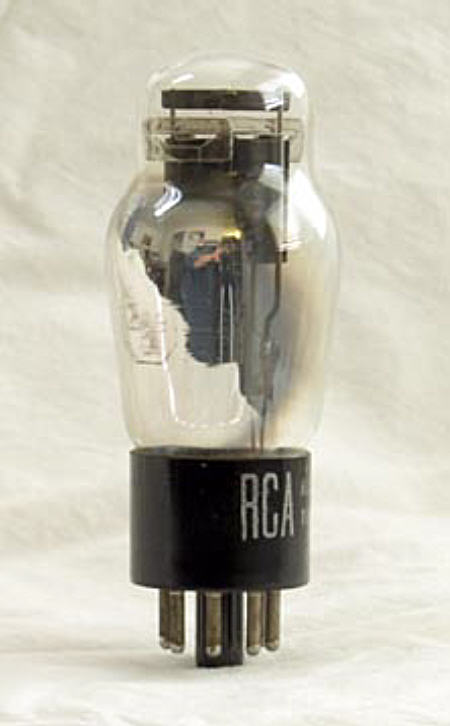
Picture by John Atwood
Unfortunately, tubes are expensive and require dangerous, heavy, and costly supporting circuitry. Moreover, as many modern enviro-theologians inform us, vacuum tubes, which run finger-burning hot, are implicated in global warming. Thus, what the world needs are cool, retro, sexy looking vacuum tubes that do not actually do anything other than glow. That's right no voltage amplification, no current gain, no dangerous high-voltages, no heat, just a soft glimmering blush of light, produced by low-energy LEDs. In other words, these audio fashion accessories could be placed atop of environmentally-sanctioned, solid-state, class-D power amplifiers to lend some of that visually warm retro 1950s charm to the sound. I am sure that both Al Gore ad Lady Gaga would approve.
Of course, smaller versions of the faux tube (that held pencil tubes) could be created for iPod use. What would power the glow? The faux tube could hold batteries or its pins could actually make an electrical connection to an external power source, say a wallwart switching power supply. A truly deluxe model could hold solar cells that would collect energy during the the day and release it at night, much like the solar celled garden walk lights work. Or the light source could reside in the faux tube socket, an LED pointing upwards. In fact, I can imagine mood-sensitive faux tubes that change color and intensity with the tempo and volume of the music played.
Okay, the visuals would be fine, but what about the sonic implications of the faux tube? I am absolutely sure that many would prefer the resulting sound to naked alternative. We all know how good the audio stones and audio pebbles sounded and they did not glow. How much would an electronically non-functional, fashion-accessory vacuum tube cost? I am sure that premier-brand faux tubes could be bought for more than $1,000, with cheap Chinese knock-offs (that used actual functioning tubes instead of designer duds) could be had for less than $30. For just as a public that doesn't really read needs clear glasses, a public that doesn't really listen...
Now we move on to tubes that actually do some work.
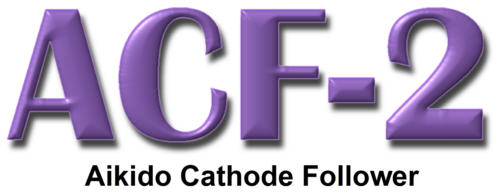
Octal Version
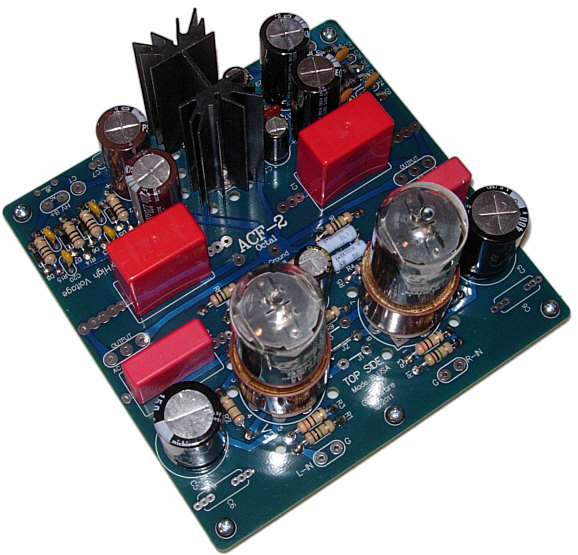
I have a new version of the ACF (Aikido Cathode Follower) to offer those who do not need any voltage gain, but do need an active tube buffer stage. Like its 9-pin predecessor, the octal ACF PCB holds a high-voltage bipolar power supply and a low-voltage heater power supply (regulated) and two channels of Aikido cathode followers.
It's a no-gain/no-pain design that's perfect for following a CD player or DAC or solid-state tuner. The octal tubes not only look cool, they sound good. The list of suitable tubes is fairly short: 6BL7, 6BX7, 6SL7, 6SN7, 8SN7, 12SL7,12SN7,12SX7. There are many fantastic sounding NOS 6SN7-like tubes out there that cost a fraction of what the otherwise identical 6SN7 would cost, with 8 and 12 volt heaters. Think outside the 6.3V box.
Since the octal ACF is basically identical to the 9-pin version, I will not go into all the details. Instead, follow this link to blog number 198 to read more about the design and its construction.
The ACF Octal PCB and kits are now available at the GlassWare Yahoo store. If you have a pair of 6SN7s just collecting dust, this is an easy and inexpensive way to put them to some good use.
Good news. Mouser Electronics is now selling Triad brand toroidal transformers, which include some nice high-voltage models that are perfect for tube-audio use. For example, the VPT230-110 transformer holds four windings: two 115Vac primary and two 115Vac secondaries. PDF
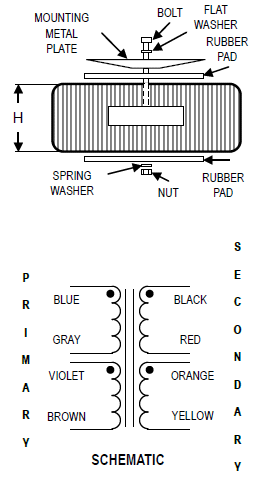
Electrical Specifications (@25C)
1. Maximum Power: 25VA
2. Input Voltage: Series: 230VAC, 50/60Hz
Parallel: 115VAC, 50/60Hz
3. Output Voltage: Series: 230VAC CT @ 0.11A
Parallel: 115.0VAC @ 0.22A
4. Voltage Regulation: 12% TYP from full load to
no load
5. Temperature Rise: 30°C TYP
6. Hipot: 4000VAC, Primary to Secondary
7. Efficiency: 87% TYP. @ full load
In other words, this transformer can be used in 115V and 230V countries and the secondary voltages possible are 115Vac or 230Vac or 230Vac CT. This last arrangement is perfect the octal ACF, which requires bipolar rail voltages. Triad also makes several low-voltage toroidal transformers that would work perfectly for the heater power supply, such as the VPT24-1040 and VPT12-1080.
(I plan on buying the VPT24-1040, as one of the 12Vac windings will power the heater power supply and the other 12Vac windings will power a separate power supply (H-PS-1) for a Logitech Duet's Squeezebox receiver, which requires 9Vdc—while the older and newer Logitech WiFi devices usually require 5Vdc. One power supply cannot be used for both heaters and the
Squeezebox receiver, as the heater power supply must be referenced to some negative DC voltage.)
When the two 115Vac secondaries of the VPT230-110 transformer are wired in series, the resulting 230Vac will rectify up to about 330Vdc, which is perfect for many tube-based projects, such as an Aikido line stage amplifier or headphone amplifier. Since finding suitable tube-audio transformers can be such a pain (and expense), being able to buy these transformers for less than $20 is good news indeed.
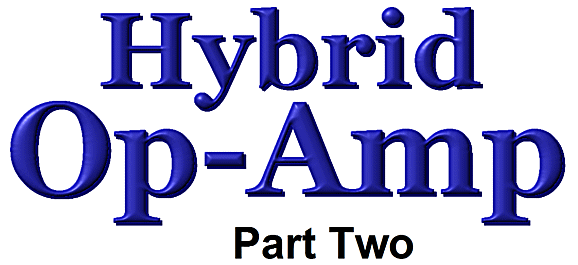
Last time we looked into designing a tube-hybrid, inverting Op-Amp that used but a single PNP transistor and ran off high-voltage bipolar power supply rails.
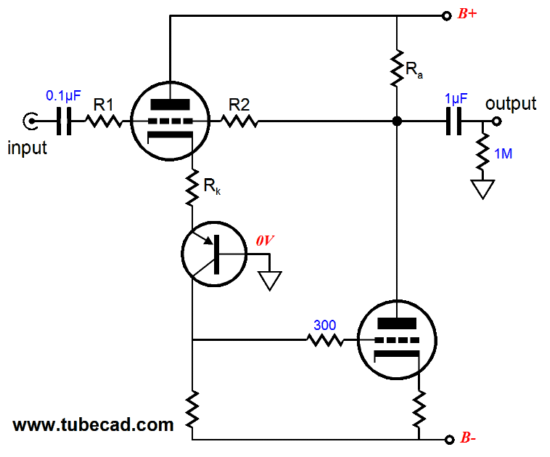
Note that this tube hybrid Op-Amp is DC coupled internally. So why are two coupling capacitors used, one at the input and one at the output? Unlike the transistor, the vacuum tubes do not immediately conduct, requiring a warm up time greater than the time it takes the bipolar power supply to come up to voltage. Disaster looms. Without the protection and isolation provided by these two coupling capacitors, the signal source and the power amplifier driven would see the naked positive rail voltage. An additional design problem is that the PNP transistor's collector load resistor cannot be too large in value, as the voltage drop across this resistor will subtract from the cathode-to-plate voltage available to the bottom triode. A small collector resistor, however, will produce a small voltage gain from the top triode. Compounding this problem is the bottom triode's extra large cathode resistor, which will subtract gain and increase the output impedance. One possible workaround is to either bypass the cathode resistor or use a zener diode in place of the resistor.
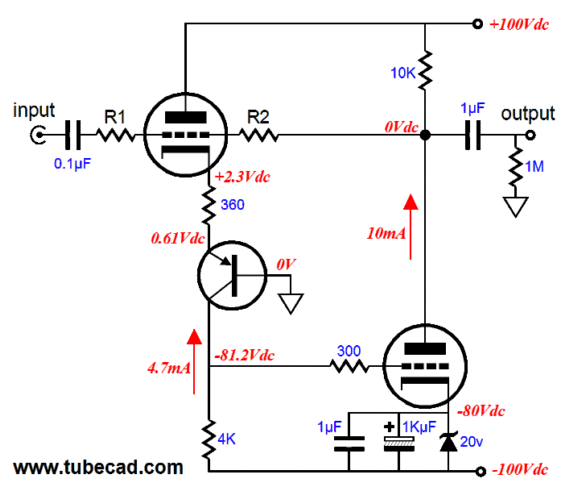
This configuration restores gain, but still requires the input coupling capacitor. A better workaround is to use an eternal coupling capacitor within the hybrid Op-Amp. In the circuit shown below, we see that the DC coupling between the two stages has been broken by the internal coupling capacitor. This change allows us to forgo the input coupling capacitor and to use a much larger collector resistor, which will greatly increase the gain of the input stage.
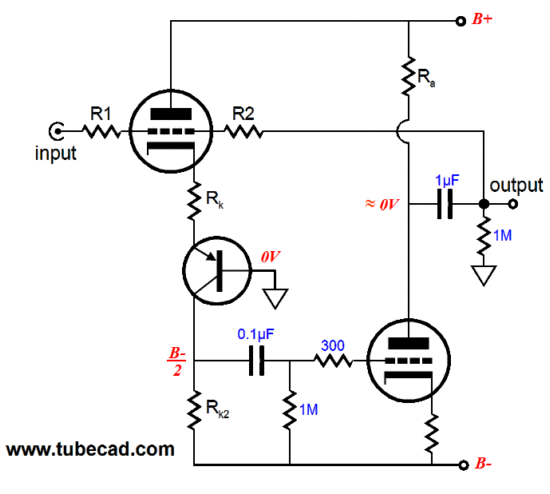
Note that the feedback resistor now connects to the other side of the output coupling capacitor, thereby allowing us to eliminate the input coupling capacitor, but at the cost of the feedback loop encompassing two reactive components. Fortunately, this hybrid Op-Amp will only run a fraction of the open-loop gain that a typical solid-state Op-Amp does, making the use of negative feedback safer. Or we could add a third stage, which would allow us to return to a DC feedback loop.
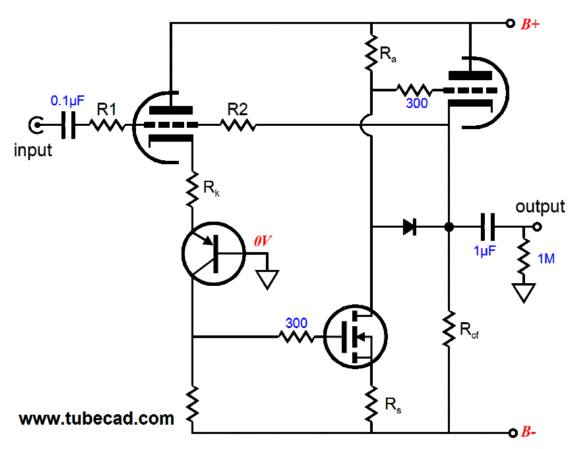
The secret behind the above circuit is the extra diode, which will prevent big DC offsets at turn on; but only if the drain resistor (Ra) and the cathode follower's load resistor (Rcf) are the same value.
I will continue with non-inverting tube hybrid Op-Amps.
//JRB
|
|
|
|
I know that some readers wish to avoid Patreon, so here is a PayPal button instead. Thanks.
John Broskie

E-mail from GlassWare Customers
Hi John,
I received the Aikido PCB today - thank you for the first rate shipping
speed.
Wanted to let you know that this is simply the best PCB I have had in my hands, bar none. The quality is fabulous, and your documentation is superb. I know you do this because you love audio, but I think your price of $39 is a bit of a giveaway! I'm sure you could charge double and still have happy customers.
Looking forward to building the Aikido, will send some comments when I'm done!
Thank you, regards,
Gary.
And
Mr Broskie,
I bought an Aikido stereo linestage kit from you some days ago, and I received it just this Monday. I have a few things to say about it. Firstly, I'm extremely impressed at the quality of what I've been sent. In fact, this is the highest quality kit I've seen anywhere, of anything. I have no idea how you managed to fit all this stuff in under what I paid for it. Second, your shipping was lightning-quick. Just more satisfaction in the bag, there. I wish everyone did business like you.
Sean H.
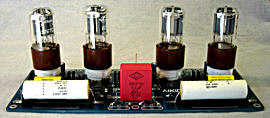
High-quality, double-sided, extra thick, 2-oz traces, plated-through holes, dual sets of resistor pads and pads for two coupling capacitors. Stereo and mono, octal and 9-pin printed circuit boards available.
Designed by John Broskie & Made in USA
Aikido PCBs for as little as $24
http://glass-ware.stores.yahoo.net/
Only $9.95
to start designing
tube-based
crossovers
and much more...
TCJ Filter Design

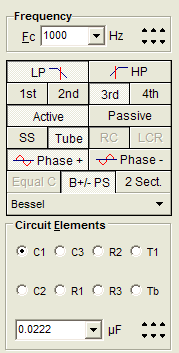
The Tube CAD Journal's first companion program, TCJ Filter Design lets you design a filter or crossover (passive, OpAmp or tube) without having to check out thick textbooks from the library and without having to breakout the scientific calculator. This program's goal is to provide a quick and easy display not only of the frequency response, but also of the resistor and capacitor values for a passive and active filters and crossovers.
TCJ Filter Design is easy to use, but not lightweight, holding over 60 different filter topologies and up to four filter alignments:
Bessel,
Butterworth,
Gaussian,
Linkwitz-Riley.
While the program’s main concern is active filters, solid-state and tube, it also does passive filters. In fact, it can be used to calculate passive crossovers for use with speakers by entering 8 ohms as the terminating resistance. Click on the image below to see the full screen capture.
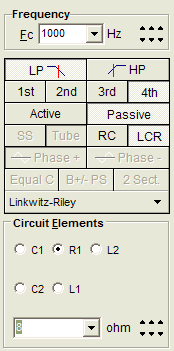
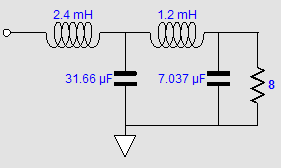
Tube crossovers are a major part of this program; both buffered and un-buffered tube based filters along with mono-polar and bipolar power supply topologies are covered. Available on a CD-ROM and a downloadable version (4 Megabytes).
|















